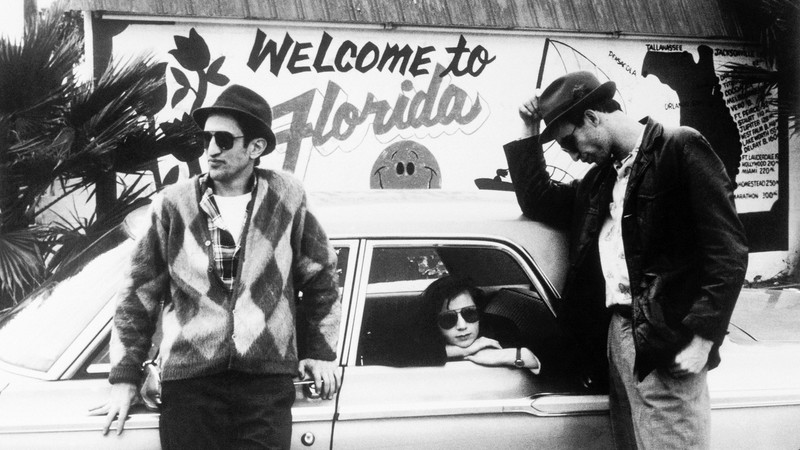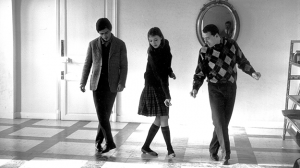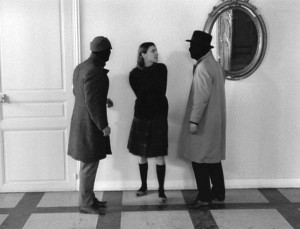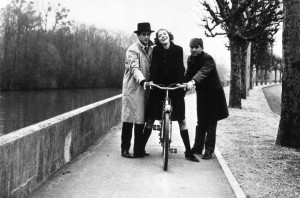Written for MUBI Notebook on May 11, 2020. — J.R.
“Stranger Than Paradise” in One Shot

“We can bet that this film will be a flop,” blurbed Jean Eustache about his fellow post-New-Wave underachiever and pal Luc Moullet’s Anatomy of a Relationship (1975), an early exercise in self-scrutiny coauthored by Moullet’s partner Antoinetta Pizzorno. “That’s the best for me: I’ll plunder it more easily.” In comparable fashion, a 1964 commercial flop made by one of the masters of both Eustache and Moullet, Jean-Luc Godard — who incidentally had helped to launch the careers of both of these disciples — was successfully plundered by Jim Jarmusch twenty years later in Stranger Than Paradise. More specifically, Jarmusch appropriated a black-on-white principle exploited by Godard mostly in interiors to depict a deadbeat trio of two male lowlifes secretly smitten by a foreign female while planning their inept capers in drab surroundings — Claude Brasseur, Sami Frey, and Anna Karina (a Dane in France) in Band of Outsiders; John Lurie, Richard Edson, and Eszter Balint (a Hungarian in the U.S.) in Stranger Than Paradise. The white void seen here by Jarmusch’s trio in a suburban Ohio snowscape, subsequently replicated by a white void in a suburban Florida seascape, is mostly physical — unlike the metaphysical void faced by Godard’s trio in a Paris suburb, who have only movie clichés to fill their plans and imaginations. Ironically, although Band of Outsiders failed abjectly at the box office it eventually became such a cult touchstone in the mainstream that Quentin Tarantino named his own production company A Band Apart after its original French title, Bande à part. It seems that nothing succeeds as much as failure. And Godard seemingly had a personal investment in the failed movie dreams of his own trio, because he named his own heroine (played by Karina, his wife at the time) Odile, after his mother.




